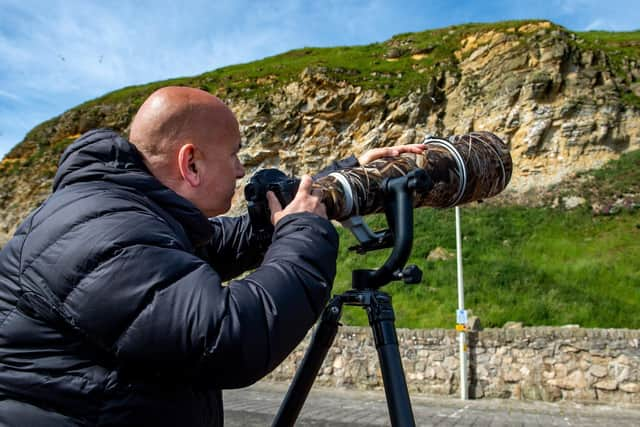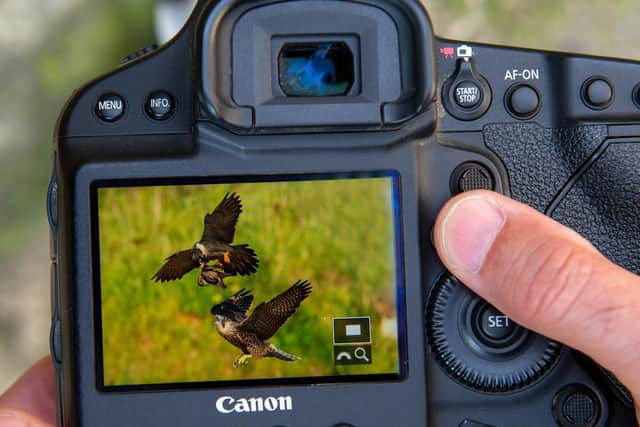Wildlife photographer Steve Race documents the peregrine falcons that draw many people to Scarborough's Marine Drive
and live on Freeview channel 276
Breeding season is a particularly exciting time with people eager to see if any young appear on the cliff face at Marine Drive.
This year the unexpected arrival of lockdown has meant wildlife photographer and Scarborough resident Steve Race has been able to document their progress daily and share it with bird watchers through social media.
Advertisement
Hide AdAdvertisement
Hide AdMr Race, a director at Yorkshire Coast Nature, said it has been a wonderful experience.


“I was born and bred here so I know the wildlife like the back of my hand. I have been photographing the peregrines for many years and this year lockdown has meant I had the time to go down every day over three weeks and show their progress.”
Peregrines lay their eggs around the end of April, beginning of May.
Mr Race said you can tell when there is a nest as the female disappears from sight, eventually reappearing to gather food.
Advertisement
Hide AdAdvertisement
Hide Ad“That is how I knew they were there but they are so small and difficult to see I wasn’t sure how many there were,” he said.


“I saw two and thought there might be a third. There was, just a few days behind the others. It was great to see them.”
Outside lockdown, Mr Race leads wildlife photography workshops and nature tours. He said birds of prey seem to fascinate everybody and the peregrine falcon, as the fastest animal on earth, is astonishing.
“It hunts on the wing and when it is catching its prey, it flies up high using a thermal then drops like a stone, hitting its target and killing it straight away.”
Advertisement
Hide AdAdvertisement
Hide AdHe said when the falcon is in the plunge – known as a stoupe – it can reach 200mph.


The peregrine falcons nest in and amongst a colony of kittiwakes and Mr Race said although they rarely eat the sea birds they have been known to use them as teaching aids.
“They often catch the kittiwakes in mid air and drag them along by the legs then let them go.”
He said one of the most fascinating things about being able to document the youngsters on a daily basis has been how much they change in such as short space of time.
Advertisement
Hide AdAdvertisement
Hide Ad“They change day by day and it is incredible in four weeks they go from being helpless chicks to the ultimate predator.”
The falcon family includes hobby, kestrel, merlin and peregrine. Peregrine falcons have long, broad, pointed wings and a relatively short tail. They have black ‘moustaches’ down the sides of their faces.
A message from the editor
Thank you for reading this story on our website. While I have your attention, I also have an important request to make of you.
In order for us to continue to provide high quality and trusted local news on this free-to-read site, I am asking you to also please purchase a copy of our newspaper.
Advertisement
Hide AdAdvertisement
Hide AdOur journalists are highly trained and our content is independently regulated by IPSO to some of the highest standards in the world. The dramatic events of 2020 are having a major impact on many of our local valued advertisers and consequently the advertising that we receive. We are now more reliant than ever on you helping us to provide you with news by buying a copy of our newspaper.
Thank you
Jean MacQuarrie
Editor-in-Chief